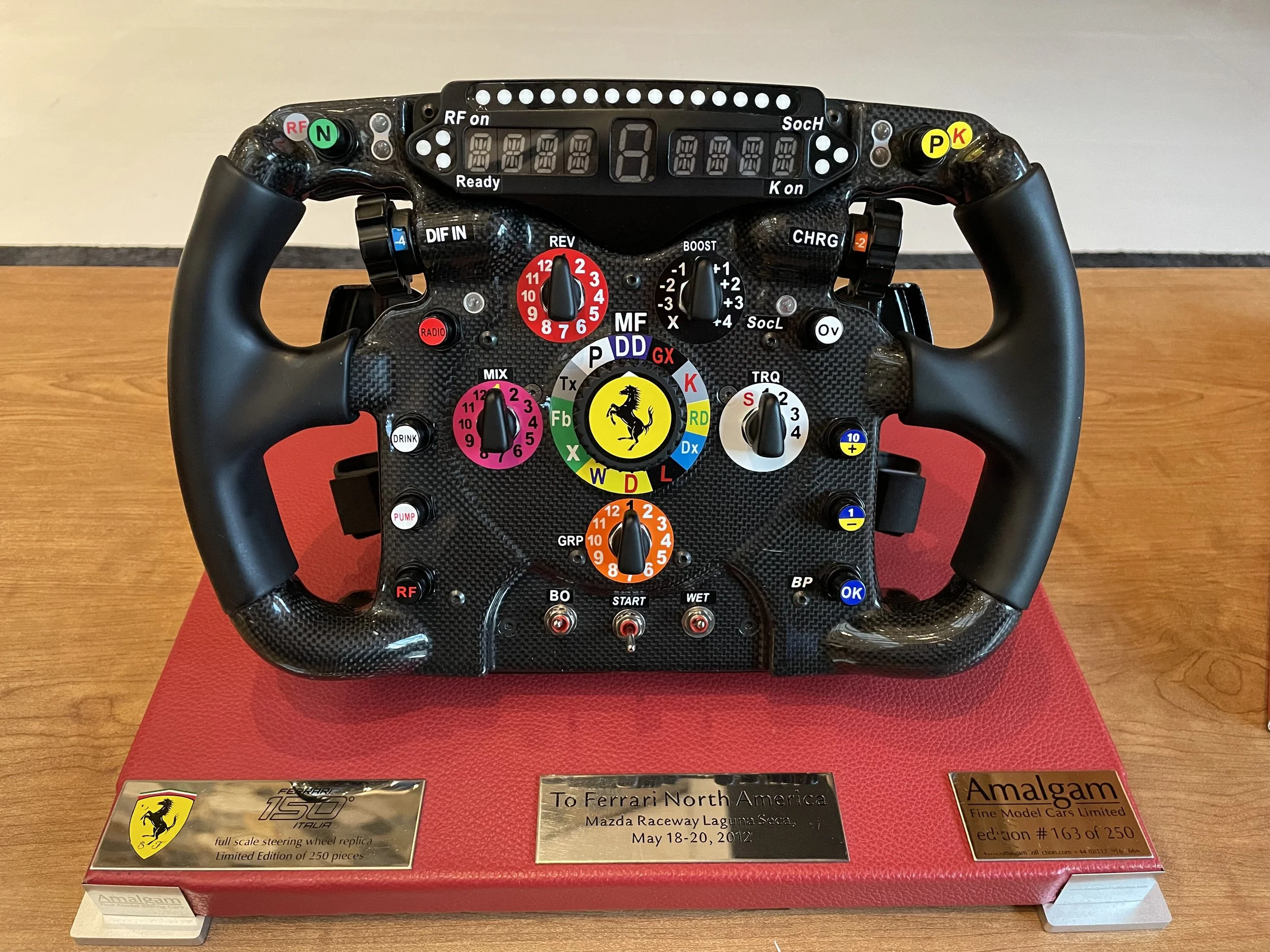Formula 1 Steering Wheel Explained!
What's the best way to understand it this Formula One Steering?
Let's start with the obvious stuff. At the top is a multi-function display that feeds information to the drivers in real time. There are also warning lights for things like engine revs and whether DRS (drag reduction system) is on. You'll see two lights in the corner of the screen that repeat the flags at the side of the circuit. With 'N' you'll select neutral and 'P' you'll activate the pit lane speed limiter.
Manettino switches are on the lower half of the steering wheel, which will be familiar to Ferrari drivers. Manettino, the big dial with Ferrari's prancing horse, is a multifunction switch. Think of it as a 'shortcut' dial for quick access to engine settings. The Manettino to the left adjusts the hybrid engine, and the dial to the right is for engine mapping - note the color gradient from eco green to full power red.
Bottom-left Manettino, labelled 'Grip', is used at the start to give the perfect amount of clutch slip and torque. Manettino on the right is another multi-function switch for recovery mode and other lesser-used stuff. What about the switch in the middle, surrounded by three colour-keyed squares? It engages different modes for the internal combustion engine - 'WU' for warm-up, 'PSHQ' for pre-start heat qualify, etc. When the safety car comes out during a race, you set it to SC.
Steering wheels for F1 cars have more controls. Below the 'N' and 'P' buttons are two rotary dials called 'DIF IN' and 'DIF MID'. These change the differential settings for corner entry and mid-corner. They can be used multiple times. Four more longitudinal rotary dials control brake shaping (BS), engine torque (TRQ), engine braking, and state of charge. Embedded in the Alcantara are two pressure controls for balancing the brakes.
As if that isn't enough, there are also buttons - the pit radio, DRS drag reduction system (K2), the 'OIL' button which activates the additional oil pump, the 'C' button for the water bottle, and a button that confirms instructions from the pit wall. They're also flicking gearshift paddles behind the steering wheel (and operating the clutch paddle from a standing start).
F1 steering wheels are not standardized across all teams. Each team has the freedom to design its own steering wheel, incorporating different shapes and parts specific to their preferences and strategies.
The assembly of a single F1 steering wheel involves a collaborative effort from mechanical designers, electrical designers, and wiring technicians. It typically requires approximately 80 hours of labor to complete the assembly process for one steering wheel in total and the cost of constructing a single F1 steering wheel is approximately $60,000, as reported by Maxim.
Each Formula 1 team has the independence and flexibility to create and design their own unique steering wheels with various shapes and components. This means that different teams have the freedom to customize and adapt their steering wheels according to their preferences and technical specifications, resulting in a diverse range of steering wheel designs across the F1 grid.
Here’s a few more questions and answers about the amazing Formula 1 Steering Wheel:
How does the steering wheel function as the central controlling unit for the entire system in an F1 car?
The steering wheel in an F1 car acts as the central controlling unit for the entire system by serving as the interface through which the driver can easily access and adjust settings related to engine mapping, differential output, engine braking, brake balance, and aero, among other functions.
What are some of the adjustability options available on a modern F1 steering wheel?
A modern F1 steering wheel offers adjustability options for engine mapping, differential output, engine braking, brake balance, and aero, providing the driver with control over various settings to optimize performance.
How does the steering wheel function as the central controlling unit for the entire system in an F1 car?
The steering wheel in an F1 car acts as the central controlling unit for the entire system by serving as the interface through which the driver can easily access and adjust settings related to engine mapping, differential output, engine braking, brake balance, and aero, among other functions.
What are some of the adjustability options available on a modern F1 steering wheel?
A modern F1 steering wheel offers adjustability options for engine mapping, differential output, engine braking, brake balance, and aero, providing the driver with control over various settings to optimize performance.
I hope this article details the intricate features present on a contemporary F1 steering wheel with meticulous precision. Positioned at the peak of the wheel is a versatile multi-function display that dynamically relays crucial information to the drivers in real time. Additionally, the lower section of the wheel accommodates essential warning lights, alerting drivers to vital metrics such as engine revs and the activation status of the DRS (drag reduction system). The familiar Manettino switches, commonly associated with Ferrari drivers, are strategically located on the lower half of the steering wheel. Further down, below the 'N' and 'P' buttons, two pivotal rotary dials named 'DIF IN' and 'DIF MID' are positioned for seamless adjustments. Complementing these are four longitudinal rotary dials that govern critical aspects including brake shaping (BS), engine torque (TRQ), engine braking, and state of charge. The steering wheel also incorporates an array of strategically placed buttons designed to facilitate various functions such as pit radio communication, DRS activation, control over the additional oil pump, water bottle management, and confirming instructions from the pit wall. In addition to these intricate controls, the steering wheel features flicking gearshift paddles discreetly positioned behind it, along with a dedicated clutch paddle for optimal performance during standing starts. This exhaustive breakdown highlights the meticulous design and multifaceted functionalities of a modern F1 steering wheel, underscoring its paramount role in enhancing driver control and performance on the track."
Had enough reading? How about switching Manettino settings from reading to watching a tutorial by Ferrari F1 Driver Carlos Sainz explain his F1 Steering Wheel?
For factory tours, racetrack adventures, museum tours, stops at the most sumptuous restaurants, and a breathlessly complete, luxurious experience of the Italian countryside — all through the lens of fellow car enthusiasts — Motorsport Labs is your go-to guide to take in not only this work of art but also works of art made by Pagani, Lamborghini, Ducati, and more. Our next travel tour to Italy September 1-8, 2022 for our Cradle of Supercars Adventure, which was promoted and featured in Sports Illustrated by the Italian Tourism Board. On our tour, you'll drive a Ferrari or Lamborghini, visit super car factories and museums like Ferrari, Lamborghini, Pagani, Ducati and, Imola racetrack, tour historic towns, and participate in Italian cooking and culinary experiences. We also have a day to Florence, Italy included, if you need to take a break from all the speed, brake dust and screeching tires! Save $800 when you travel with a friend!

